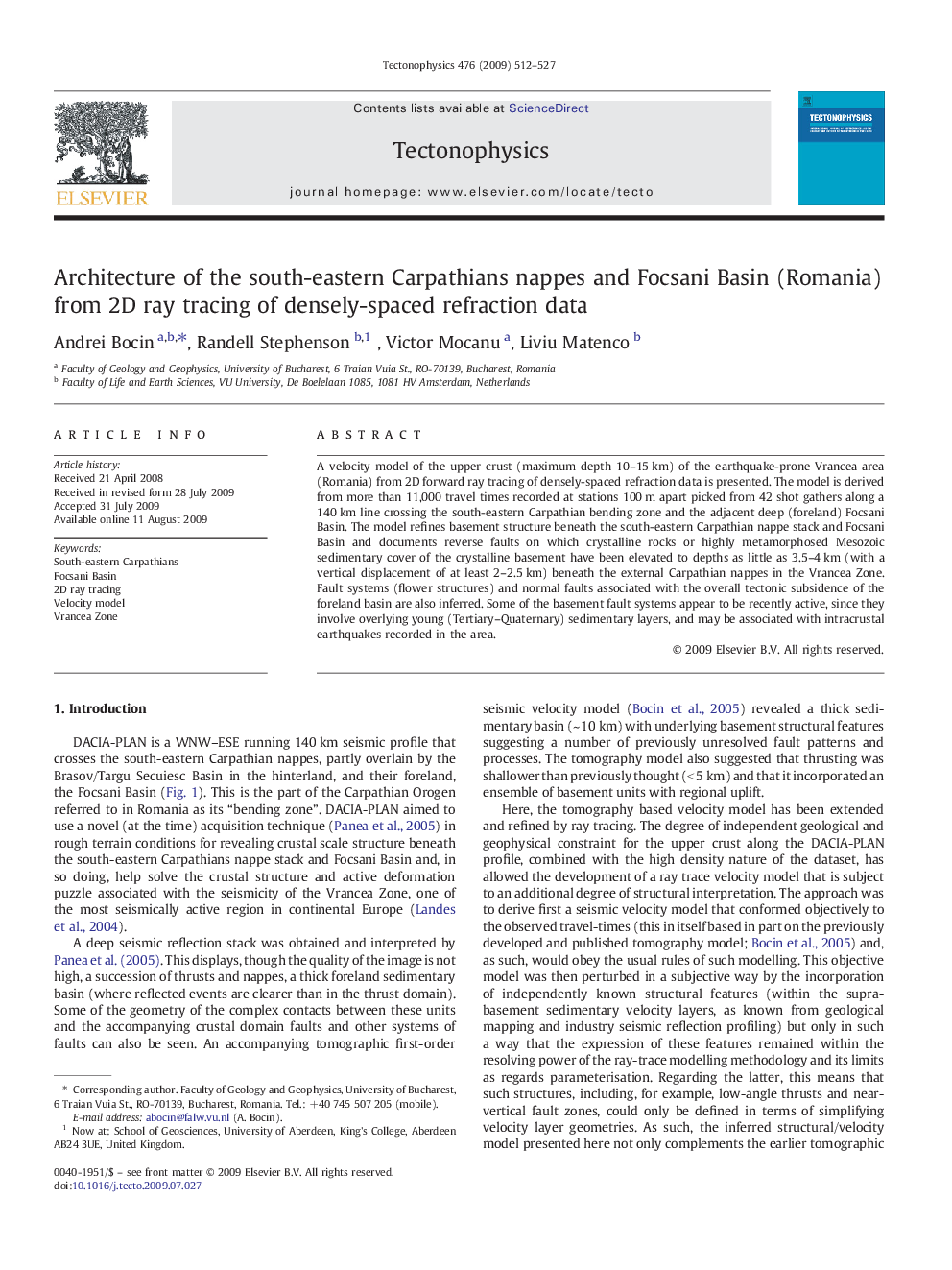| Article ID | Journal | Published Year | Pages | File Type |
|---|---|---|---|---|
| 4693982 | Tectonophysics | 2009 | 16 Pages |
A velocity model of the upper crust (maximum depth 10–15 km) of the earthquake-prone Vrancea area (Romania) from 2D forward ray tracing of densely-spaced refraction data is presented. The model is derived from more than 11,000 travel times recorded at stations 100 m apart picked from 42 shot gathers along a 140 km line crossing the south-eastern Carpathian bending zone and the adjacent deep (foreland) Focsani Basin. The model refines basement structure beneath the south-eastern Carpathian nappe stack and Focsani Basin and documents reverse faults on which crystalline rocks or highly metamorphosed Mesozoic sedimentary cover of the crystalline basement have been elevated to depths as little as 3.5–4 km (with a vertical displacement of at least 2–2.5 km) beneath the external Carpathian nappes in the Vrancea Zone. Fault systems (flower structures) and normal faults associated with the overall tectonic subsidence of the foreland basin are also inferred. Some of the basement fault systems appear to be recently active, since they involve overlying young (Tertiary–Quaternary) sedimentary layers, and may be associated with intracrustal earthquakes recorded in the area.
